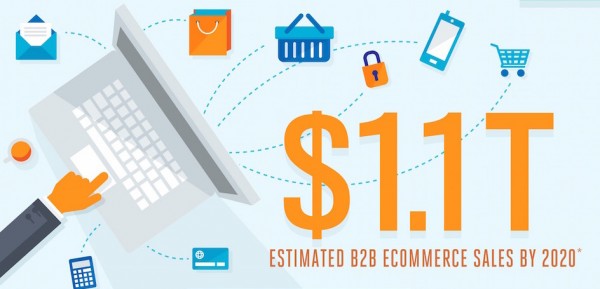Prior to the digital age, manufacturers and suppliers produced thick, printed catalogs, employed armies of sales and account managers to build relationships and close deals, and staffed warehouses to deliver on their customers’ needs. Today’s B2B commerce transactions typically involve multiple organizations and cover a complex range of applications that enable organizations to form both offline and online relationships with suppliers, customers, distributors, resellers and other partners.
Many B2B organizations have established an online channel and are focusing on how to grow online sales in order to maximize revenue. A study conducted by Frost & Sullivan projects that B2B eCommerce sales will reach $12 million globally by the year 2020. to succeed in the new B2B landscape, companies are going to have to shift the way they think about the end customer and their buying experience. The four trends below are driving B2B companies to re-platform and rebuild their eCommerce sites to satisfy the growing demands and high expectations of their customer.
Buyer Self-Service
- The B2B “connected buyer” is looking for empowered experiences to deliver efficiency and convenience. Today’s self-serve eCommerce sites do more than replicate their sales reps, often providing functions that humans simply cannot do.
Third-Party Procurement Providers to Insourced B2B Platform
- By bringing these platforms in-house, B2B organizations achieve greater differentiation and flexibility and reduce outside costs with affordable enabling technology.
Optimizing the B2B Experience to Match B2C Expectations
- Today’s buyers are transitioning their product search and purchases from traditional, offline channels to digital (i.e. web and mobile) settings and companies that do not adapt their technology to their buyer’s needs will fall behind.
B2B Omni-channel
- Omni-channel strategies are helping B2B suppliers make it easy to conduct business – reducing internal costs, optimizing operational efficiency, and enabling sales teams to provide more value where it counts, manage relationships, and grow the business.
In our recent guide, Top Trends in B2B Commerce, our experts discuss the challenges and solutions that we provide surrounding these trends in 2015.
Click here to download the guide!

